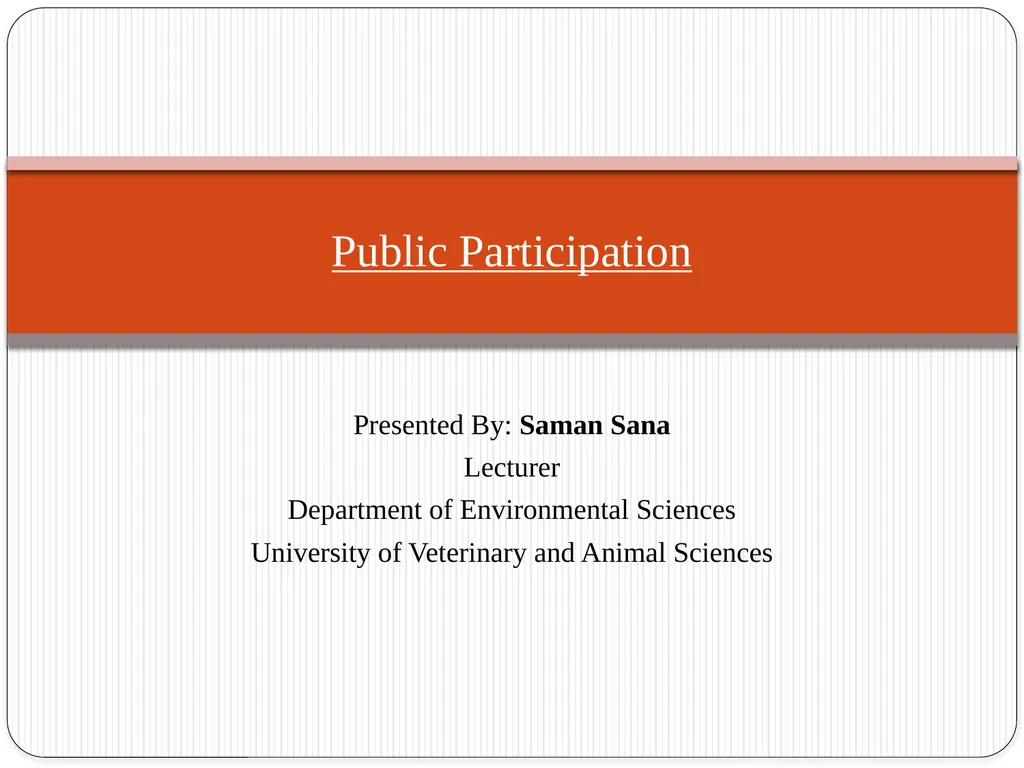
Public Participation Presented By: Saman Sana
Author: tatyana-admore | Published: 2025-05-29
Description: Public Participation Presented By: Saman Sana Lecturer Department of Environmental Sciences University of Veterinary and Animal Sciences Introduction Public involvement is a fundamental principle of the EIA process. Timely, well planned and
Download Presentation
Download the PPT/PDF: Download
Transcript:
Loading transcript…